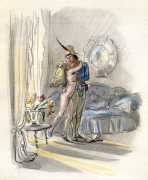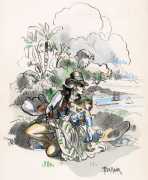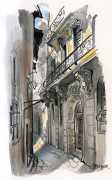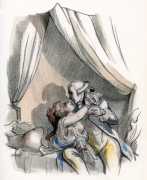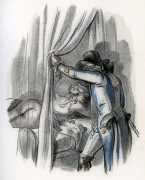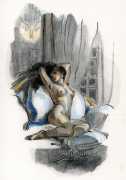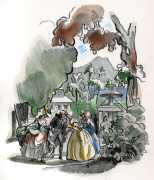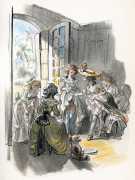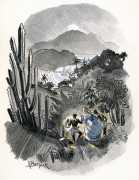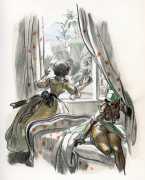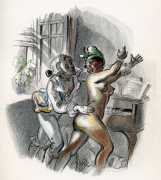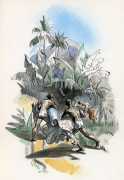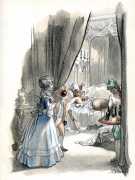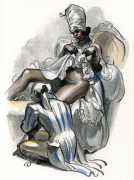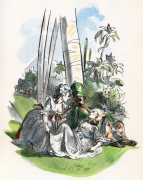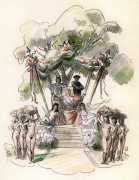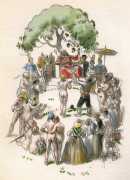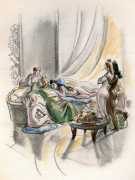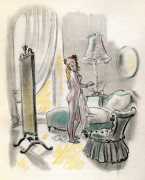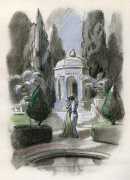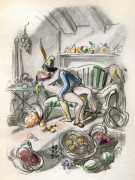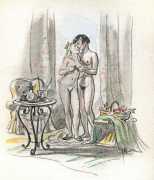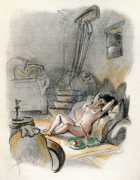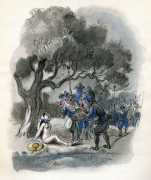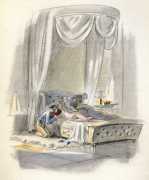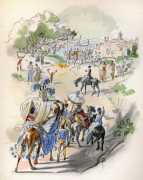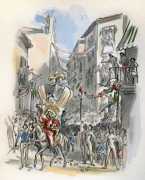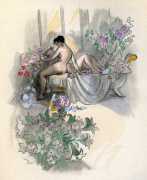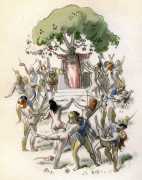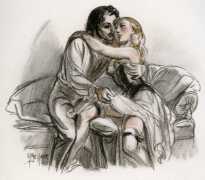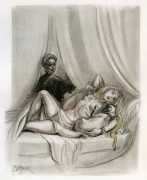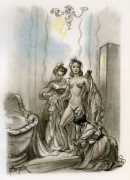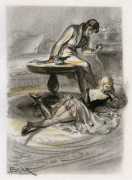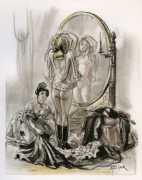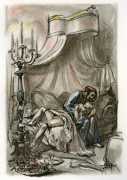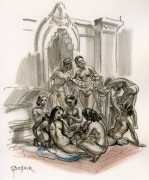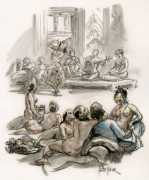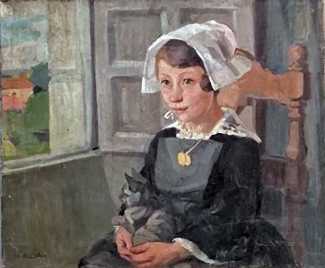
Henriette Bellair is one of so many women artists about whom almost nothing is recorded, her surviving work being the only testimony of her undoubted talent. The daughter of a miniaturist and lithographer mother and an architect-decorator father, in 1913 her family moved from Paris, where she was born, to Nantes in Brittany, where she studied literature and history before entering the Beaux-arts in Nantes. Having become a drawing teacher and a member of the Société des Artistes Français (Society of French Artists), she regularly exhibited paintings of the people and landscape of the Breton coast.
Bellair also illustrated some ten books, the earliest commission being in 1926 for fourteen plates to accompany an edition of the seventeenth-century satirical poetry collection Voyage de Chapelle et de Bachaumont, written by by the two eponymous poets during a trip through Provence and Languedoc. The first of several erotic classics for which she produced drawings was Hugues Rebell’s Les nuits chaudes du Cap Français, and it would appear that her skill and reliability in the genre attracted the attention of other Paris publishers, resulting in commissions for Andréa de Nerciat’s Félicia, Pierre Louÿs’ Roi Pausole, and Théophile Gautier’s Fortunio.

